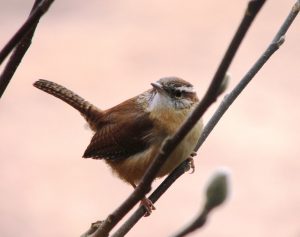The wren is one of the most common garden birds although you might be forgiven for not noticing them, you will have undoubtedly heard them. They have almighty lungs that enable them to burst out tuneful melodies, so loud that you would expect to come from a much larger bird.
During the winter months, you may have noticed that sightings of the wren become more infrequent, and you may not hear their song.
If you wondered are wrens in decline, you’re not alone, I did too. It took a little detective work to discover if the little chubby fellow’s numbers are decreasing.

The wren is as prevalent and populous as always, with around 7.7 million breeding territories in the UK. They can be found in most areas other than the most remote places and those at the highest altitudes.
Numbers often decline in winter, particularly if we suffer an exceptionally cold and harsh one. The tiny bird has such a large surface area in comparison with its volume that they struggle to retain body heat and sadly, can’t stave off hypothermia.
Happily, those that survive usually go on to successfully breed. They typically lay between 5-8 eggs in one clutch, and sometimes raise 2 broods in a particularly successful breeding season.
Remember, the male wren isn’t always the most monogamous bird and might impregnate 2,3, or even 4 females in each season. This is how their population is replenished each spring.
Table of Contents
How wrens survive winter
Most small garden birds will struggle to survive through a severe winter; the wren more so than most due to their tiny stature.
They feed continuously throughout the day, foraging in dark, damp places hoping to find food. They are insectivorous birds that feed mostly on insects, but when they are challenging to find, they will eat berries and nuts. Suet is a great source of heat and energy for all birds, and gladly, the wren will partake from a table, but preferably ground feeders.
Body heat
Although usually quite solitary birds, wrens are clever enough to know that there is warmth as well as safety in numbers. As dusk rolls around they seek shelter, often returning to their old nests, natural cavities, or bird boxes. They cram together in small spaces and any number of birds will huddle together. It is not unusual for 40 birds to roost together, although as many as 60 have been spotted leaving a single nesting box.
This must be a magnificent sight, but you will need to be up early to catch it, the wrens leave before sunrise to resume their hunt for food.
Final thought…
Wrens continue to climb in my estimation. They are one of the few garden birds that maintain their established nesting sites far beyond the breeding season. This almost guarantees shelter and a modicum of warmth when winter rolls around.
I don’t think we need worry if wrens are in decline, these industrious little birds have got it all sussed out.
